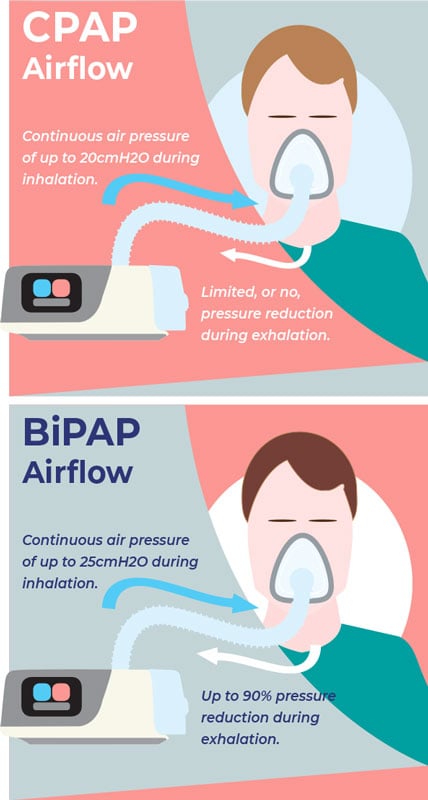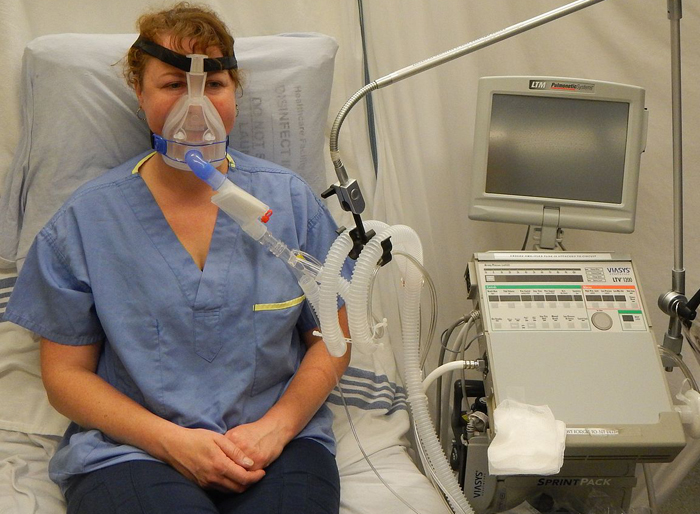Save Money with Convenient BiPAP Rental Strategies
Save Money with Convenient BiPAP Rental Strategies
Blog Article
Bipap vs. CPAP: Which Is the very best for Your Rest Condition?
When navigating the intricacies of sleep problems, the choice between BiPAP and CPAP therapy is an essential factor to consider. Each modality uses unique benefits tailored to specific conditions, yet the choice depends upon private person needs and convenience degrees. While CPAP offers a stable airflow suitable for obstructive sleep apnea, BiPAP's double pressure setups might boost comfort for those with even more complex respiratory problems. Understanding these differences can significantly influence treatment effectiveness, leaving one to ponder which alternative genuinely straightens with their wellness requirements and way of living.
Recognizing Sleep Disorders
Rest conditions include an array of problems that interrupt typical rest patterns, impacting both the high quality and duration of remainder. These conditions can show up in numerous forms, consisting of sleeplessness, rest apnea, narcolepsy, uneasy leg disorder, and parasomnias. Each condition provides special difficulties, usually causing significant daytime tiredness, cognitive impairment, and emotional disruptions.
Sleeplessness is characterized by problem falling or remaining asleep, while rest apnea involves repeated disruptions in breathing during sleep, usually resulting in fragmented rest. Narcolepsy, on the various other hand, is noted by excessive daytime drowsiness and abrupt sleep strikes. Troubled leg syndrome causes uncomfortable feelings in the legs, triggering an irrepressible impulse to move them, which can additionally prevent the ability to go to sleep.
The influence of rest conditions expands past individual wellness, affecting overall productivity, connections, and lifestyle. Understanding the certain nature of each condition is essential for efficient medical diagnosis and treatment. As rest health and wellness ends up being progressively identified as an important part of overall wellness, dealing with these disorders is essential for improving both sleep high quality and everyday functioning.
How CPAP Functions
Constant Favorable Air Passage Pressure (CPAP) therapy is often utilized as a primary therapy for obstructive rest apnea (OSA) The system of CPAP entails making use of a device that supplies a consistent stream of air via a mask worn throughout sleep. This air movement keeps positive stress in the airway, protecting against the collapse or obstruction of the throat that can happen throughout rest.
When a person takes a breath in, the CPAP equipment offers a continual flow of air, making certain that the air passage continues to be open - BiPAP Rental. This not just alleviates the symptoms of OSA, such as snoring and interrupted rest patterns, however additionally reduces the connected wellness threats, including cardio problems and daytime fatigue
The stress setups on a CPAP device can be tailored to satisfy specific patient needs, usually figured out through a rest research study. Generally, CPAP treatment has been shown to considerably improve the top quality of rest and general health and wellness for individuals enduring from obstructive sleep apnea.
How BiPAP Functions
BiPAP, or Bilevel Positive Air Passage Stress, is a specialized type of non-invasive air flow that is especially valuable for patients with problems such as complex rest apnea or breathing disorders. Unlike CPAP, which delivers a continual stream of air at a solitary stress, BiPAP provides two distinct stress setups: a higher inspiratory stress for breathing and a lower expiratory stress for exhalation. This dual-pressure approach permits easier breathing, reducing the effort required throughout exhalation.
The gadget runs with a mask fitted over the nose or mouth, connected to an equipment that generates atmospheric pressure. When the client inhales, the equipment provides the higher pressure to aid with air flow, guaranteeing that the airway stays open. Upon exhalation, the equipment he said automatically lowers the pressure, making it look at this site more comfy for the patient to breathe out.

Secret Distinctions In Between BiPAP and CPAP

On the other hand, BiPAP (Bilevel Positive Respiratory tract Stress) offers two different pressure settings: one for breathing and a lower one for exhalation. This dual stress system enables even more comfortable breathing, particularly for individuals that fight with exhaling versus a continual pressure. BiPAP is often recommended for patients with complex sleep apnea, persistent obstructive lung condition (COPD), or those who call for added support during sleep.
In addition, the intricacy of BiPAP gadgets commonly causes a greater expense and requires more cautious titration than CPAP. BiPAP Rental. Recognizing these key distinctions can assist in identifying which gadget might be better for certain sleep problems, establishing the groundwork for informed therapy decisions
Choosing the Right Therapy
The choice between BiPAP and CPAP therapy largely pivots on the details characteristics of the find out here sleep disorder, the person's overall wellness, and their convenience with the device. CPAP, which delivers a continual stream of air, is commonly prescribed for obstructive rest apnea (OSA)
Alternatively, BiPAP offers two levels of pressure: one for breathing and a reduced one for exhalation. This dual pressure system is useful for clients with complex rest apnea or those that experience trouble breathing out against a continuous pressure. In addition, BiPAP is frequently recommended for individuals with respiratory system problems, such as chronic obstructive pulmonary disease (COPD), where varying pressure settings can improve comfort and conformity.
Eventually, a complete evaluation by a sleep expert, including a rest research, can help figure out which therapy straightens ideal with the person's needs. Variables such as comfort, simplicity of use, and specific medical conditions should also be thought about to enhance therapy end results.
Final Thought
In summary, both BiPAP and CPAP offer distinctive objectives in the administration of rest disorders. CPAP works for obstructive sleep apnea through regular air flow, while BiPAP uses twin stress setups that enhance comfort for those with complicated rest apnea or breathing issues. The selection in between these treatments should be assisted by individual requirements and problems, necessitating an extensive examination by a rest professional to guarantee optimum therapy outcomes and enhanced quality of rest.

In general, CPAP therapy has actually been shown to significantly enhance the high quality of rest and general health for individuals suffering from obstructive sleep apnea.
BiPAP is frequently advised for individuals with intricate sleep apnea, persistent obstructive lung disease (COPD), or those who require extra support during rest.
CPAP is reliable for obstructive rest apnea via consistent air movement, while BiPAP offers double stress setups that enhance comfort for those with complex sleep apnea or respiratory problems.
Report this page